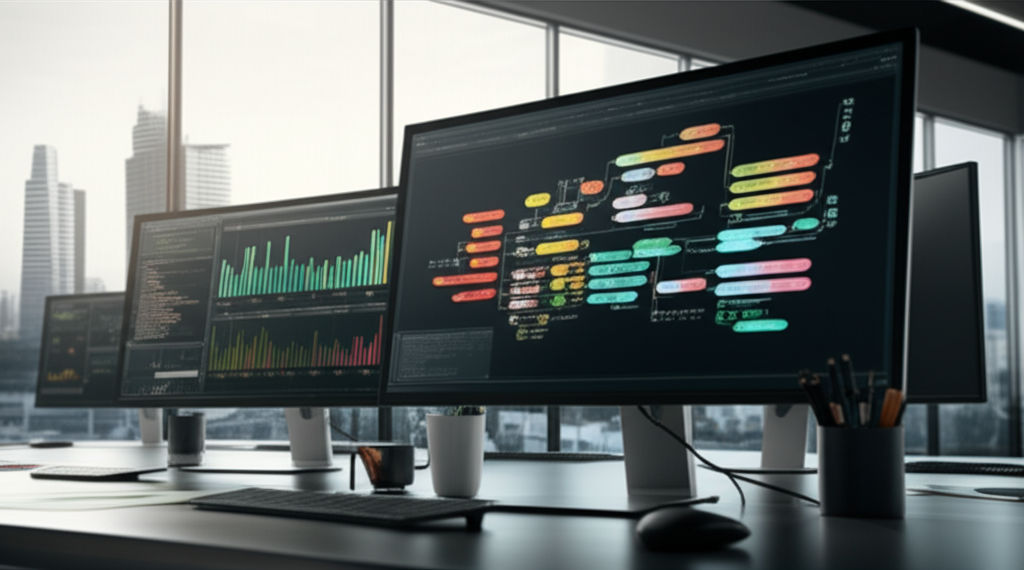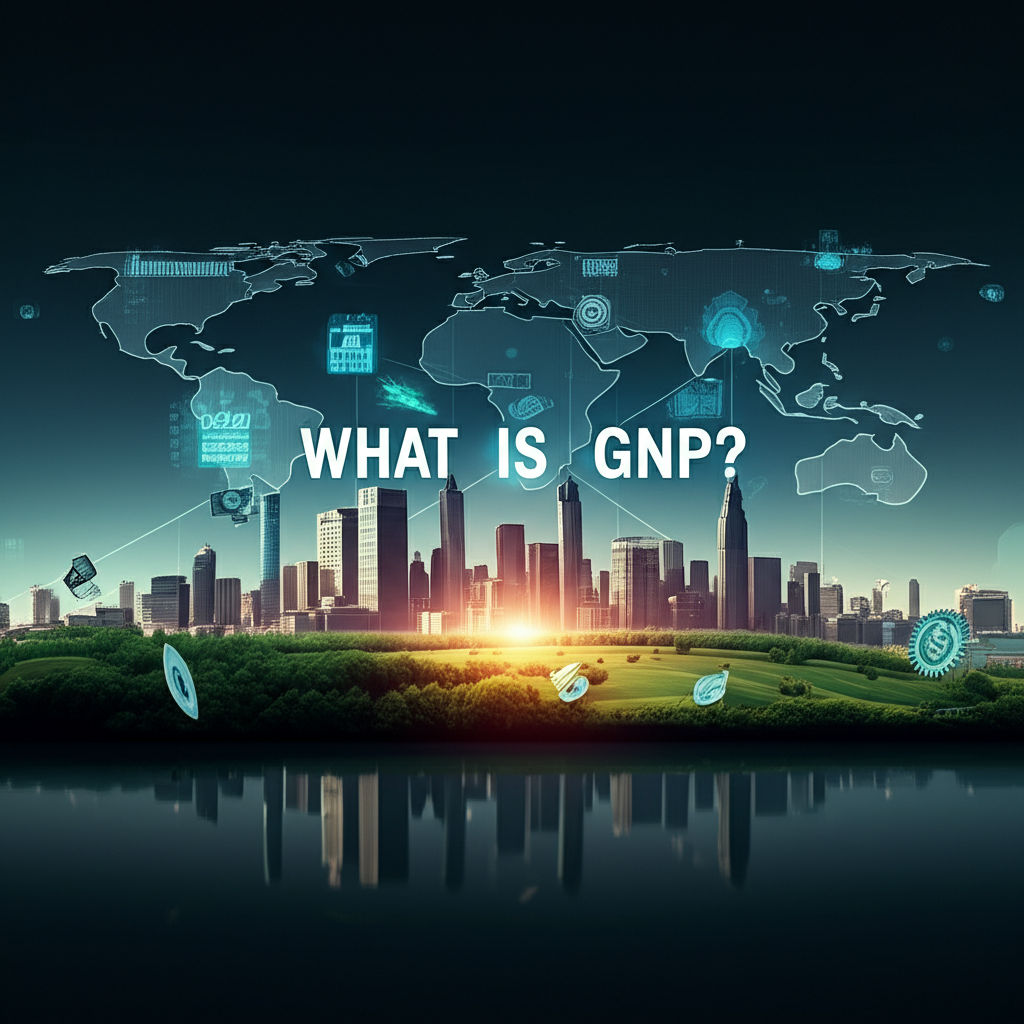Business Process Monitoring
Emily Willis

Photo: Business Process Monitoring
Unlocking Business Excellence: The Power of Business Process Monitoring
In today's fast-paced business world, simply having processes isn't enough. Every organization, from a bustling startup to a sprawling enterprise, relies on a multitude of interconnected activities to deliver products, serve customers, and manage operations. But how do you know if these activities are truly working efficiently? How do you spot problems before they escalate into major headaches, or identify opportunities to save time and money? The answer lies in Business Process Monitoring (BPMon).
Think of your business as a complex machine. Without gauges, sensors, and regular check-ups, you'd never know if a vital part was overheating, if fuel was being wasted, or if a critical component was about to fail. Business Process Monitoring acts as your organization's diagnostic system, providing the crucial insights needed to keep everything running smoothly, efficiently, and effectively. It's about gaining real-time visibility into your operations, understanding how well your processes are performing, and proactively making improvements.
What Exactly is Business Process Monitoring?
At its core, Business Process Monitoring is the proactive review and analysis of how your business processes are performing. It's a systematic approach to tracking, measuring, and evaluating the effectiveness and efficiency of your workflows. This isn't just about looking at numbers after the fact; it's about continuously observing and analyzing data as processes unfold to identify potential bottlenecks, ensure compliance, and find opportunities for improvement.
While it's a vital part of the broader Business Process Management (BPM) lifecycle, BPMon focuses specifically on the "monitoring" aspect. BPM encompasses designing, modeling, executing, and optimizing processes, while monitoring ensures those processes are delivering the intended results. It's like a doctor performing a check-up: even if you feel healthy, monitoring your blood pressure or cholesterol might reveal areas for improvement.
Key Aspects of Business Process Monitoring include:
- Real-time Tracking: Continuously observing process activities and performance as they happen.
- Data Analysis: Collecting and analyzing data from various sources (like transactional systems, IoT devices, and customer interactions) to gain valuable insights.
- Key Performance Indicators (KPIs): Using specific, measurable metrics to gauge the success and health of a process, such as cycle time, error rates, or customer satisfaction scores.
- Alerts and Notifications: Setting up automated warnings when a process deviates from expected performance or crosses predefined thresholds.
- Visualization Tools: Presenting process data through dashboards and reports for an easy-to-understand overview.
Why is Business Process Monitoring Crucial for Your Business?
In today's competitive landscape, every organization, regardless of size, stands to gain significantly from effective Business Process Monitoring. It's not just a "nice-to-have" but a strategic necessity that underpins operational excellence and sustainable growth.
Here's why BPMon is so vital:
- Boosts Efficiency and Productivity: By continuously monitoring processes, you can quickly identify bottlenecks, inefficiencies, and areas where resources are being wasted. This allows you to streamline workflows, eliminate unnecessary steps, and optimize resource allocation, leading to increased output and faster turnaround times. Imagine a sales pipeline where leads get stuck at a certain approval stage; BPMon would highlight this immediately, allowing you to unblock it.
- Reduces Costs: Inefficiencies often translate directly into higher operating costs. By pinpointing and rectifying issues like redundant tasks, excessive manual effort, or delays, BPMon helps cut operational expenses and improve your bottom line. Automation of tasks, often identified through monitoring, can also lead to significant cost savings.
- Enhances Customer Satisfaction: Smooth, efficient, and error-free processes directly impact the customer experience. By monitoring customer-facing workflows (like order fulfillment or customer service inquiries), businesses can identify and address issues promptly, leading to faster service, higher quality, and happier customers.
- Ensures Compliance and Mitigates Risk: Many industries operate under strict regulatory standards. BPMon provides transparency and detailed records of process execution, helping organizations adhere to these regulations and identify potential compliance gaps or vulnerabilities early on. It can even help detect unusual patterns indicative of potential fraudulent activities.
- Enables Data-Driven Decision-Making: Moving beyond guesswork, BPMon provides real-time data and actionable insights into process performance. This empowers managers and stakeholders to make informed decisions about process optimization, resource allocation, and strategic adjustments.
- Fosters Continuous Improvement: BPMon is not a one-time fix but an ongoing cycle of assessment, redesign, implementation, and monitoring. It provides the necessary insights for continuous improvement methodologies, allowing organizations to adapt to changing market conditions and customer needs.
Key Elements of Effective Business Process Monitoring
To truly harness the power of Business Process Monitoring, several elements must work in harmony. These components form the backbone of a robust monitoring system, providing the visibility and control necessary for process excellence.
Defining Key Performance Indicators (KPIs)
KPIs are the lifeblood of process monitoring. They are quantifiable metrics that allow you to measure the success and health of your processes against predefined objectives. Without clear KPIs, you're essentially flying blind.
Examples of crucial process KPIs include:
- Cycle Time: The total time it takes to complete a process from start to finish (e.g., time from order placement to delivery).
- Error Rate: The percentage of instances where a process results in a defect or mistake (e.g., number of incorrect invoices per 100).
- Throughput: The number of units or tasks completed within a specific timeframe (e.g., number of customer inquiries resolved per hour).
- Cost Per Process/Unit: The financial resources expended to complete one instance of a process or produce one unit.
- Customer Satisfaction Scores: Metrics like Net Promoter Score (NPS) or Customer Satisfaction (CSAT) directly linked to customer-facing processes.
- Compliance Rate: The percentage of processes that adhere to all relevant regulations and internal policies.
Defining these KPIs clearly and ensuring they align with overall business goals is the first critical step.
Real-time Data Collection and Analysis
Effective business process monitoring relies on timely and accurate data. Organizations collect information from various sources, including transactional systems, enterprise resource planning (ERP) systems, customer relationship management (CRM) systems, IoT devices, and even customer interactions.
The ability to analyze this data in real-time or near real-time is paramount. This allows for immediate detection of issues, enabling quick resolution before problems escalate and impact customers or operations significantly. Advanced analytics tools, including Business Intelligence (BI) platforms and process mining software, transform raw data into actionable insights, helping identify trends, uncover hidden inefficiencies, and make data-driven decisions.
Automated Alerts and Notifications
Manual checking of performance metrics is simply not sustainable for complex or high-volume processes. Modern Business Process Monitoring systems incorporate automated alerts and notifications. These systems can be configured to trigger an alert when a KPI deviates from a set threshold (e.g., if order fulfillment time exceeds a certain limit or if the error rate jumps unexpectedly). This allows teams to take corrective action proactively, often before the issue impacts customers.
Intuitive Dashboards and Reporting
Raw data, no matter how accurate, is only useful if it can be easily understood and acted upon. Process monitoring leverages visualization tools like customizable dashboards and comprehensive reports to provide a clear, concise overview of process performance. These visual representations help stakeholders quickly grasp the health of their processes, identify trends, and drill down into specific areas of concern. This transparency fosters better communication and collaboration across departments.
Automation as an Enabler
While distinct from BPMon, workflow automation plays a crucial role in making business process monitoring more effective. Automating repetitive and rule-based tasks within a process not only reduces manual errors and increases efficiency but also makes the process more consistent and easier to monitor. Automation tools often generate the data needed for monitoring and can even trigger alerts or corrective actions based on predefined rules, streamlining the entire process management lifecycle.
How to Implement Business Process Monitoring: A Step-by-Step Guide
Implementing Business Process Monitoring might seem like a large undertaking, but by breaking it down into manageable steps, any organization can achieve greater operational visibility and efficiency.
1. Define Your Critical Business Processes
Start by identifying the workflows that have the most significant impact on your organization's performance, customer satisfaction, or strategic goals. Don't try to monitor everything at once. Focus on key processes like customer onboarding, order fulfillment, claims processing, or financial approvals. Clearly outline the start and end points, the steps involved, the people or systems responsible, and any decision points within each process.
2. Identify and Set Key Performance Indicators (KPIs)
For each critical process, define the specific, measurable, achievable, relevant, and time-bound (SMART) KPIs that will indicate its success or failure. What does "good" look like for this process? What are
Latest ✨
View Allsecrets to mastering your business financial plan with five simple steps. Learn how to analyze financial data, set measurable goals, and create a comprehensive strategy for success. Unlock profitability, make confident decisions, and ensure a bright future for your business
Emily Willis
Fiscal policy is a crucial tool used by governments to influence economic activity and achieve various objectives. It involves decisions on government spending, taxation, and borrowing. During economic downturns, fiscal policy plays a key role in supporting recovery, stimulating demand, and promoting growth.
Emily Willis
Unpack GNP: Understand national wealth & global economic contributions. Learn how GNP differs from GDP & why it matters for a country's prosperity.
Emily Willis
Unlock personalized education! Adaptive learning paths use AI to tailor content, pace, & difficulty to your unique needs. Discover the future of learning.
Emily Willis
Business
View All
June 9, 2025
Budgeting Tips for Business ExpensesMaster your business finances! Discover essential budgeting tips to control expenses, improve cash flow, and drive sustainable growth for your enterprise.
Emily Willis

June 8, 2025
Master Your Business Cash FlowMaster cash flow! Understand its importance, how it differs from profit, and actionable strategies to boost your business's financial health.
Emily Willis

June 8, 2025
Scale Your Business SmartlyScale your business smartly for sustainable growth. Learn strategies to increase revenue efficiently, avoid common pitfalls, and build a robust enterprise.
Emily Willis
Economy
View AllInvolved in an Uber accident? Learn why hiring an Uber accident lawyer is crucial, what your legal options are, and how to choose the right attorney for your case
Read MoreUnlock the world of cross-border investment. Understand FDI, FPI, global trends & their economic impact. Navigate international capital flows effectively.
Read MoreUnderstand business cycles: master economic upswings & downturns. Make informed financial decisions, build resilience, and seize opportunities.
Read MoreEntertainment
View All
July 5, 2025
PR Coordinator Entry Level EntertainmentLights, Camera, PR! Your guide to becoming an entry-level PR Coordinator in entertainment. Discover essential skills & a roadmap to your dream career.
Emily Willis

August 5, 2024
VR and AR Transform EntertainmentVirtual reality (VR) and augmented reality (AR) are transforming the entertainment industry by offering immersive experiences that blur the lines between the real and virtual worlds. VR completely transports users into computer-generated environments, while AR overlays digital elements onto the real world.
Emily Willis

August 4, 2024
Recommended Movies and TV Series to Watch This Yearlist of recommended movies and TV series to watch this year. The movies include "Dune: Part Two," "Spider-Man: No Way Home," "The French Dispatch," "No Time to Die," and "Encanto." The TV series include "Stranger Things: Season 4," "The Mandalorian: Season 3," "The Witcher: Season 2," "Ted Lasso: Season 3," and "Loki: Season 2." Each entry includes reasons to watch, such as stellar cast, visually stunning cinematography, engaging plot, and character development.
Emily Willis
Health
View AllUnpack the Health Sciences Division! Learn how this critical, multidisciplinary field drives well-being, research, and global health progress.
Emily Willis
Quality sleep is essential for overall health and well-being, impacting physical, cognitive and emotional functioning. Lack of quality sleep can lead to a variety of health issues, including weakened immune function, heart problems, weight gain and cognitive impairment.
Emily Willis
Nutrition is crucial for maintaining overall body health, impacting energy levels, disease prevention, and overall well-being. A healthy diet includes fruits, vegetables, whole grains, proteins, healthy fats, and hydration. Proper nutrition positively affects energy levels, immune function, heart health, weight management, and mental health. Practical tips for improving nutrition include planning balanced meals, reading food labels, cooking at home, limiting processed foods, and staying hydrated. By prioritizing nutrition and making informed choices, individuals can enhance their health and well-being.
Emily Willis
Trending 🔥
View All
1
2
3
4
5
6
7
8
9
10
Lifestyle




Technology
View All
August 5, 2024
How to Protect Yourself from Cyber Security Threats in the Digital Age
The digital world has become an integral part of our lives, offering convenience, information, and connection. However, with this convenience comes an increased risk of cyber security threats. From identity theft to financial loss, the consequences of falling victim to a cyberattack can be devastating. Fortunately, by understanding the common threats and implementing effective protection measures, you can significantly reduce your risk.

August 5, 2024
The Impact of AI on the Future of Work and Education
AI is rapidly advancing and reshaping industries, economies, and societies, especially in the areas of employment and education. In the workplace, AI is changing roles through automation and creating new job opportunities. The future of work will most likely involve collaboration between humans and AI, requiring workers to develop new skills and engage in lifelong learning.

August 4, 2024
The Role of 5G Technology in Revolutionizing Communication
The introduction of 5G technology is set to revolutionize communication by offering faster speeds, lower latency, and increased capacity for connecting devices. This technology will impact various sectors such as healthcare, transportation, and entertainment. 5G enhances communication through faster speeds, lower latency, and increased capacity, enabling applications like remote surgery, autonomous vehicles, and high-quality streaming.

August 5, 2024
What is Blockchain and How does it Work?
Blockchain technology is a decentralized digital ledger that records transactions securely and transparently across multiple computers. Key concepts include decentralization, cryptographic security, and consensus mechanisms. Transactions are verified, grouped into blocks, and added to the blockchain through a consensus process.

















